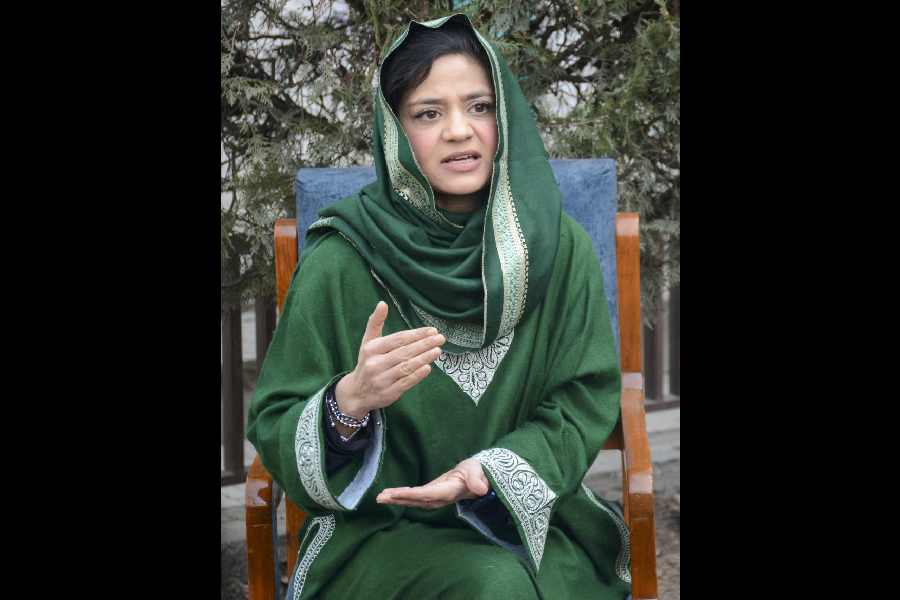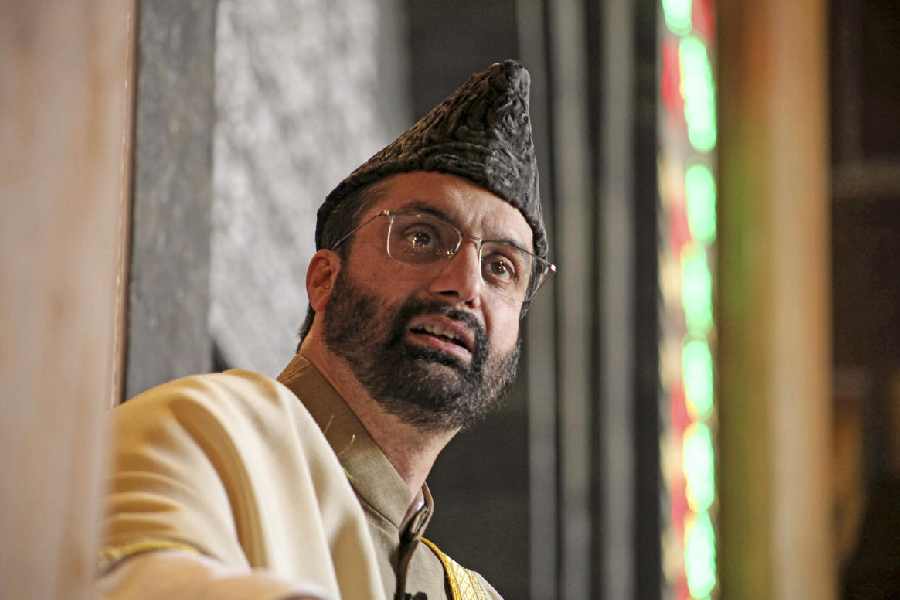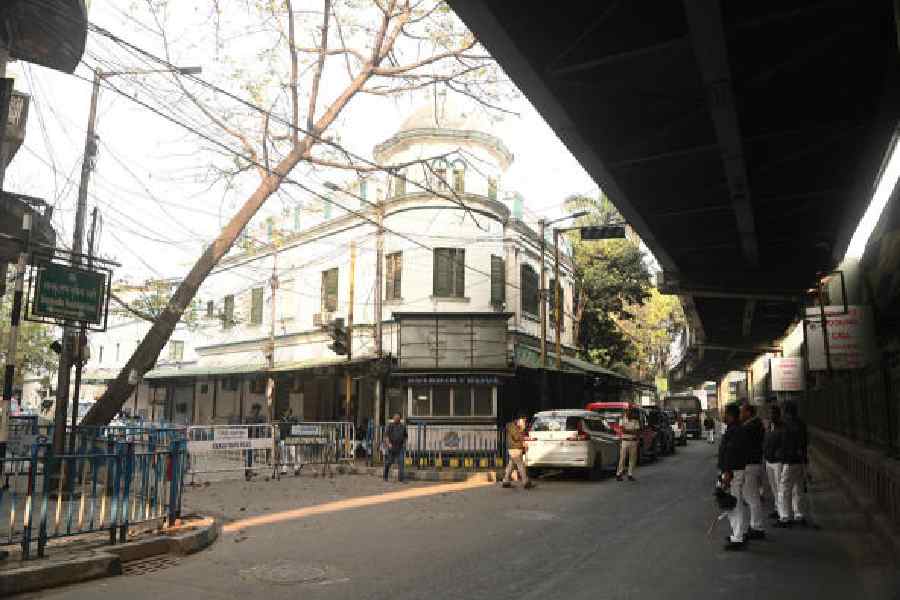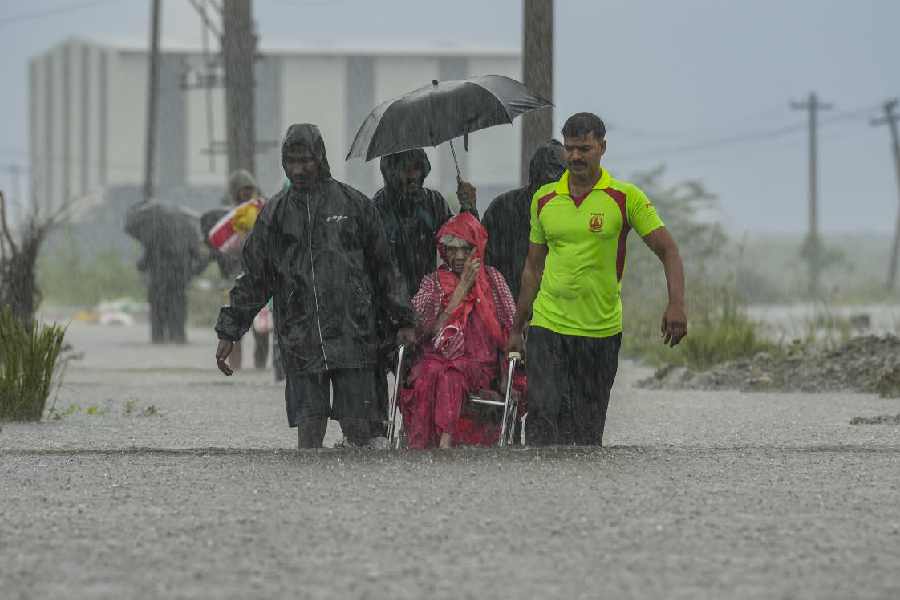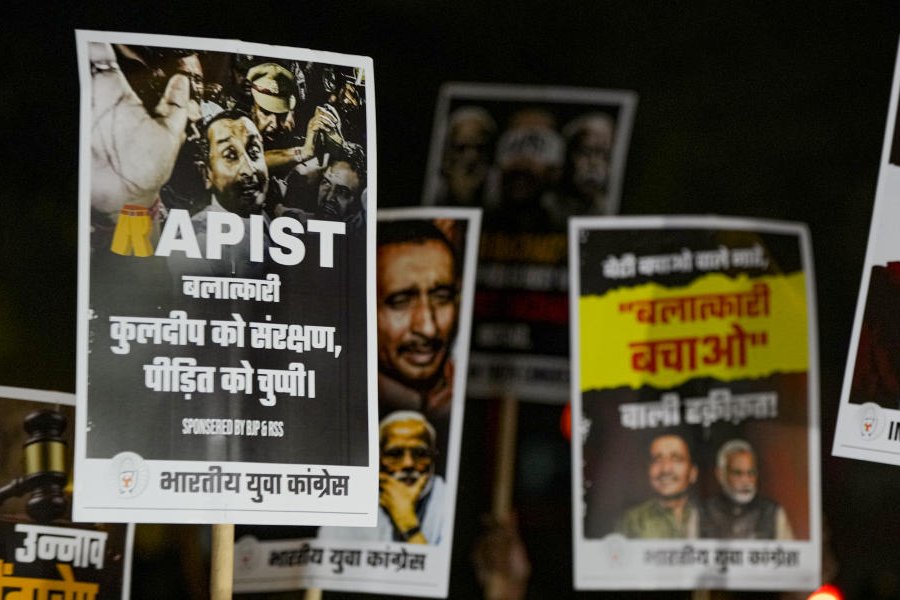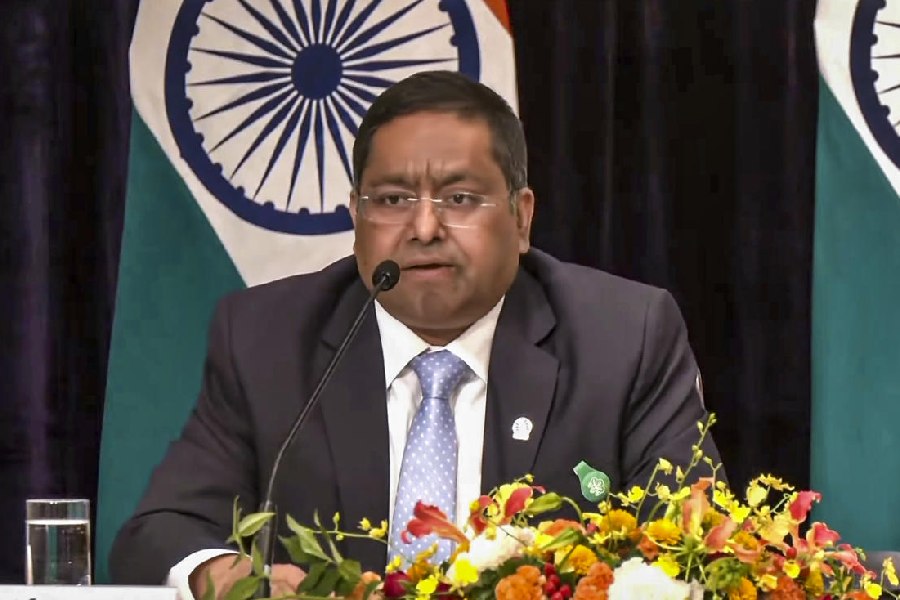 |
| The Jaisalmer fort in yellow sandstone |
Jaipur, Sept. 11: If you haven’t been to Satyajit Ray’s Sonar Kella yet, just rush.
Or it may be too late.
No, it’s not the film Sonar Kella that’s in danger but the Golden Fort of Jaisalmer that formed the backdrop of Ray’s 1974 movie. The 855-year-old fort is crumbling and may not hold out for much longer against manmade and natural interference.
Incessant rain the past few days has damaged the fort, bringing down a 40ft-long and 20ft-wide portion of the retaining wall near the main entrance.
Another part, 100ft long, is on the verge of collapse, making it unsafe for the fort’s residents and thousands of tour-ists who visit it every day and raising questions over proper utilisation of the Rs 6.5-crore conservation fund.
A faulty sewerage, unchecked encroachment and illegal construction, including 35 unlicensed hotels and guest houses, have exacerbated the plight of the world’s only “living fort”, which houses over 4,000 people, said to be descendants of Rajput ruler Rawal Jaisal.
Because of lack of proper exit routes, experts say, water is seeping into the subsurface, making stone particles loose and even soluble.
Built by Rawal Jaisal in 1156 on Trikuta Hill, the fort rises like a mirage from the barren Thar desert with its 99 bastions silhouetted against the sky. It soars 30 metres above a maze of streets, squares, places and a cluster of dwellings, all in golden yellow sandstone.
By nightfall, a sense of mystery descends, something that perhaps inspired Ray to use the fort as the backdrop of his detective movie that starred Soumitra Chatterjee as Feluda, his fictional sleuth.
As early as 2001, environment experts had observed that the seeping water would be harmful for the stability of the fort.
Amita Beg, the India representative of World Monuments Fund, voiced fears about water seepage underneath the fort and the dangers it posed.
The Lonely Planet travel guidebook advises tourists not to stay in the fort as it is weak and unsafe.
Over the years, 87 of the 469 structures within the fort have collapsed. In 1993, a portion of Rani Ka Mahal, one of its most significant buildings, caved in under the heavy load of its saturated sandstone walls.
Seventeen of the 99 bastions of the fort have already crumbled. The remaining 82 are occupied by people who have built four-storey houses on their edges, making both the fort and their lives unsafe.
Experts fear the bastions wouldn’t be able to withstand the added weight of these illegal constructions and eventually give way.
As the fort area is on weak sedimentary rock units, another danger is from tremors. According to a Geological Survey of India report, the fort is in a seismic zone and that three fault lines pass under it. The 2001 Gujarat quake |had caused extensive damage to several buildings in the fort.
A report prepared by consultancy firm Bombay Collaborative Urban Designing and Conservation also confirmed tectonic movement beneath the fort.
“The main cause of damage to the fort walls and bastions are erosion activity around the hill slopes, drainage congestion, unauthorised activities and absence of a proper sewerage system,” ASI superintendent archaeologist, Jaipur circle, Syed Jamal Hasan told The Telegraph. “Also sand-bearing winds hitting the fort and fluctuations in night and day temperatures cause damage.”
Rules say the permission of the ASI superintending archaeologist, Jaipur circle, is needed for any construction within 100 metres of the fort. In 2004, following a PIL, Rajasthan High Court issued a directive to remove all unauthorised constructions.
But who is listening?
Since 2004, at least 168 new unauthorised constructions have come up inside and outside the fort till March this year. Conservationists say it would be very difficult to remove the unauthorised residents as they account for quite a few votes during election season.
Simon Blake, a UK tourist who returned to Jaisalmer this year for a second visit, said: “The general condition of the fort has worsened in the last five years…. It may be the world’s only living fort, but the residents have turned it into a litter bin with rubbish strewn all around and building their own structures on this historic one. Unimaginable in any other country!


